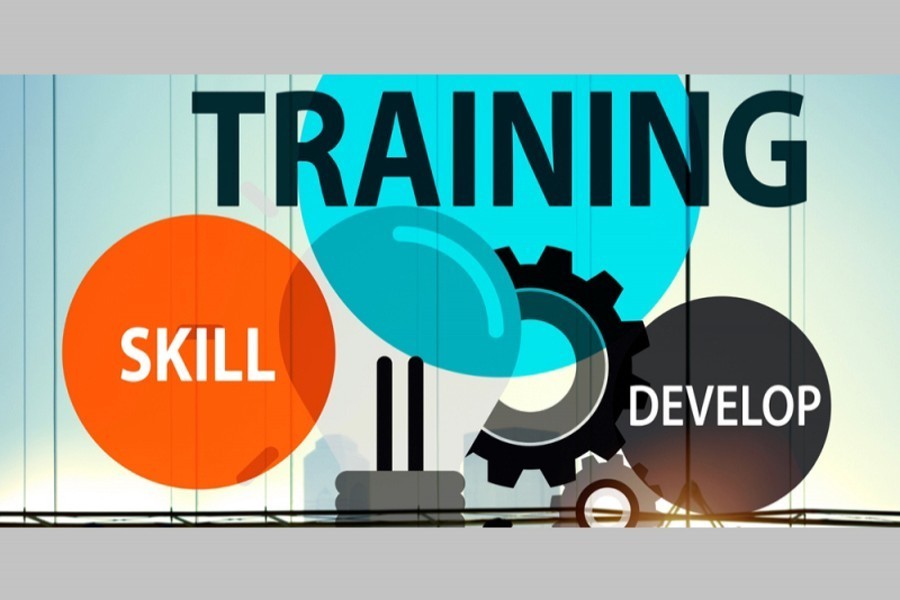Very few people are aware that the country has a specialised agency called National Skills Development Authority (NSDA). The fact that such a state entity is in existence -- that too for some time, has reasons to inspire hope that the government, well aware of the need for skill development, is up for developing skills in keeping with the needs at home and abroad. What is particularly important, besides skill development in general terms, is need-based skills which only can cater to the requirements of advanced and emerging technology in particular, and innovation in manufacturing of all hues in general. At a seminar organised by the aforementioned organisation in the capital last week, speakers stressed upon need-based trainings to utilise them to create human capital for the economy to grow. While there is no argument against this, it may sound hollow if scores of issues related to skill development, including identifying sector-specific target groups, are not well devised and worked on with a clear roadmap and objective.
That there is a serious skill gap even in the country's core manufacturing and industrial sectors has recently been highlighted in a BIDS (Bangladesh Institute of Development Studies) study report. The study found the country's major manufacturing sectors lack the required skills expected of them -- up to an average 30 per cent or more. The 10 most important sectors on which the study mainly focused included agro-food processing, healthcare, hospitality and tourism, RMG and textile, constructions, leather, light engineering, shipbuilding, IT, and electronics. Five potential sectors were also taken under the purview of the study; these are furniture, jute, pharmaceuticals, plastic and renewable energy. The report said that alignment of education and skill development with industrial policy was important to reduce the skill gap. The rate of annual training in the surveyed sectors is low -- only 1.35 per cent vis-à-vis the national average of 3.65 per cent. Training programmes have been suggested to gradually move towards technologically sophisticated industries as the skill gap was higher for the professionals and technical personnel.
No doubt skills now available in the manufacturing sector may be said to be moderate, at its best. In the past decades moderate skill somehow served the country, as low wage was considered an important factor for competitiveness. Cheap labour was believed to fetch competitiveness, especially in manufacturing not-so-upscale products for exports. However, the perception that low labour cost can guarantee competitiveness is outdated. For a country like Bangladesh, time is ripe to part with the low wage-driven approach to stay competitive in the days ahead. The draft of the country's Second Perspective Plan (2021-2041) prepared by the Planning Commission projects this impression in clear terms, "In the unfolding industrial universe of the future, Bangladesh firms will face stark reality that competitive advantage founded on low labour cost cannot be guaranteed for all time." The report also said local companies will have to focus on innovation to maintain a competitive edge instead of relying on traditional advantages that have paid off, so far. "Without such efforts, entrepreneurs need to be warned that the current competitive advantage in labour-intensive garment exports could be lost in (the) future," the draft report warned.
It is not just the entrepreneurs and businesses who/which are to be warned about the deficiencies resulting from skill gap, the onus is squarely on the government to create facilities -- and preferably in a sector-specific basis. Although it is initially the job markets at home and abroad that come to mind, the idea of skill development is integral to the making of efficient human resource that besides taking care of itself can contribute to the economy in myriad forms and shapes. It is here that skill is essentially a matter of developing the population, preferably the youths, in various areas of activities. While higher skill is a matter related to the educated groups, less educated groups are the potential target for hands-on skill development.
The key issue is about developing a national culture for nurturing and developing skills that can turn humans into resources. This is because, as yet, there is no known or lately innovated shortcut to skill development. A continuous process, it calls for persistent and comprehensive planning. Examples are aplenty of development programmes and industrial productivity languishing in deficiencies mostly from lack of required skills of the manpower engaged at various tiers. As a result, we are yet to see any noticeable improvement in meeting the prevailing skill gaps in various spheres of productivity. There has not been any stocktaking of quantifiable achievements from various programmes undertaken by the public and private sectors, as yet.
While deficiencies in skilled human resource at home are made up by large intake of foreigners in various productive sectors, export of unskilled workers abroad is destined to fetch very little in wages and salaries. In both cases, it is the lack of value addition that ultimately costs the country dearly.
The country's garment sector alone hires the services of thousands of expat personnel to supervise the day-to-day running of factories. Most of the jobs, as reports say, are not at all high-tech, but require thorough knowledge of machinery and equipment. Thus the country spends about $5.0 billion on foreign employees.
It suggests that a thrust on need-based skills has to be integrated with the state policy to cultivate human resources for improvement at a satisfactory level.
wasiahmed.bd@gmail.com


